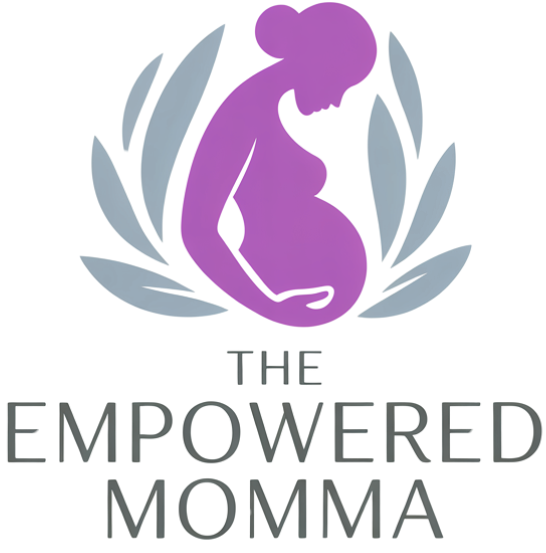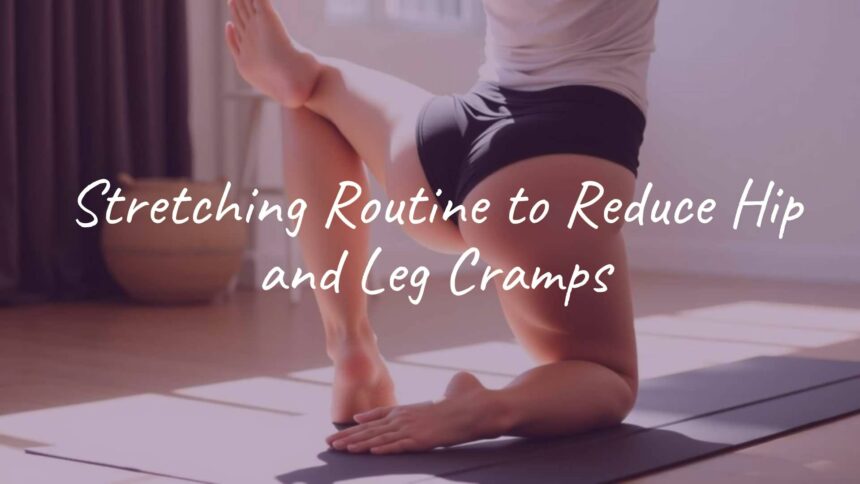Hip and leg cramps can show up suddenly and cause sharp pain that interrupts your day or sleep. The good news is that a regular stretching routine can help relieve and prevent these cramps. Proper stretching improves how your muscles move, increases blood flow, and helps you relax, which all work together to lessen how often and how badly you get cramps. In this article, you’ll find out the reasons behind stretching, when to do it, and which stretches work best for hip and leg cramp relief.
How Does Stretching Help With Hip and Leg Cramps?
Better Flexibility and Blood Flow
Stretching makes your muscles longer and more flexible, so they’re less likely to tighten up quickly and cause cramps. Think of a muscle like a spring-a flexible spring moves easily, while a tight one snaps more readily. Flexible muscles handle movement better and are less likely to spasm.

Stretching also helps bring more blood to your muscles. With better blood flow, your muscles get more oxygen and nutrients, and waste products are removed faster. Without enough circulation, waste can build up and cause cramps or make muscles tired. Stretching helps keep your muscles clean and energized.
Helping Muscles Recover and Relax
Whether you’ve been active or sitting still all day, your muscles can get stiff. Stretching helps release built-up tension and lets your muscles calm down. When you regularly stretch, you help your muscles recover after use and avoid staying stiff or cramped. Stretching is also a good time to focus on calm breathing, which helps your whole body unwind and makes cramps less likely.
Keeping Cramps Away With Consistent Stretching
Doing stretches often is what really helps protect against cramps. Just like you wouldn’t get fit after one workout, you need to stretch regularly to prevent cramps. Aim to stretch the big muscle groups at least two or three times a week, or every day if you can. Regular stretching builds up your muscles’ ability to handle movement without cramping and helps reduce how often you get cramps over time.
When Is the Best Time to Stretch to Prevent Cramps?
Before Exercise
It’s smart to warm up your muscles before being active. Rather than doing long, deep stretches (which might be too much before movement), try some light cardio like a five to ten minute walk to get the blood flowing. Then do dynamic stretches that move your body, such as swinging your legs. This wakes up your muscles and gets them ready, making cramps less likely during exercise.
After Physical Activity
Stretching after you’re done moving is a great way to help your muscles recover. At this point, your muscles are already warm and easier to stretch. Do slow, steady stretches and hold each one to help your muscles lengthen again, lower tension, and avoid cramps or soreness later on. This helps you recover faster and keeps your muscles loose for next time.

Before Bed to Prevent Nighttime Leg Cramps
Leg cramps at night can wake you up and hurt a lot. Sometimes these cramps are linked to both leg and lower back problems. A gentle stretch routine at bedtime that targets your legs and low back helps ease any tightness from the day. Focus on stretches for the hamstrings, calves, and hip flexors, as well as some that gently move your hips and relax your lower back. This helps calm your muscles and nerves so you can sleep without cramps.

How to Stretch Safely and Effectively for Hip and Leg Cramps
Stretching Tips: Technique and Body Position
- Always stretch until you feel a gentle pull, not pain.
- If you feel sharp discomfort, stop and ease off.
- Move into and out of stretches slowly and avoid bouncing, which can cause injury.
- Keep your body in good position so you stretch the right muscles.
- Remember to breathe deeply and avoid holding your breath during stretches.

How Long Should Each Stretch Last?
The usual advice is to hold a stretch for about 30 seconds. This gives your muscles time to relax and adjust. For tighter areas, you can hold for up to a minute or two. Repeat each stretch two to four times, making sure you stretch both sides. It’s better to hold a gentle stretch longer than to push too hard for a short time.
Safety for Those With Hip Pain or Injuries
If you already have hip pain or an injury, be extra cautious with stretching. If your hip pain is serious, keeps getting worse, or stays around, check with a healthcare provider or physical therapist before starting new stretches. They can tell you which stretches are safe and which ones to skip based on your condition.
- For example, people with osteoporosis should avoid stretches that put a lot of pressure on the hips or spine.
- If you had hip surgery or hip replacement, get guidance from your doctor or therapist.
- If a stretch makes your pain worse, stop right away, rest the area, and talk to a professional before trying again.
Which Stretches Work Best for Hip and Leg Cramps?
| Stretch Name | Targets | How to Do It |
|---|---|---|
| Hip Flexor Stretch | Front of hip and thigh | Kneel on one knee, other foot flat in front. Keep back straight, lean forward gently until you feel stretch in front of hip. Hold 30 seconds, switch sides. |
| Butterfly Stretch | Inner thighs and hips | Sit with soles of feet together, knees out to sides. Gently press knees toward floor. Hold for 15-30 seconds, repeat. |
| Pigeon Pose | Deep hip rotators and glutes | From all fours, bring one knee forward and straighten the other leg back. Lean forward over bent leg. Hold 30 seconds, switch sides. |
| Figure Four Stretch | Glutes and hips | Lie on back, cross ankle over opposite knee, pull the other leg toward chest. Hold 30 seconds, switch sides. |
| Lying Hamstring Stretch | Back of thigh | Lie on back, lift one leg up, gently pull it toward you with hands or towel. Hold several seconds, switch legs. |
| Quadriceps Stretch | Front of thigh | Stand and grab ankle behind you, pulling heel toward buttocks. Hold 30 seconds, change sides. Use support if needed. |
| Calf Stretch | Back of lower leg | Stand near wall, put one foot behind, press heel into ground, lean toward wall with other knee. Hold 30 seconds, switch. |
| Leg Swings | Hips and legs (dynamic) | Stand, hold on for balance, swing one leg forward and back, then side to side. Do 10-15 times in each direction per leg. |

Frequently Asked Questions About Stretching for Hip and Leg Cramps
Should I Stretch a Sore Hip?
If your hip hurts a lot, is swollen, or you have a fever, get medical care first. If it’s mild soreness or you feel stiff, gentle stretching might help. Don’t stretch if it causes pain-stop or go slower. It’s best to ask a doctor or physical therapist what’s best for you, especially if the pain is new or keeps coming back.
How Can I Stretch a Sore Hip Joint?
Start with gentle stretches and few repeats, making things easier on your sore hip. Warm up your muscles first-try five to ten minutes of easy walking or cycling. Focus on stretches that work the muscles around your hip, such as the hip flexor, butterfly, and figure four stretches. Listen to your body and stop right away if you feel sharp pain. With regular, gentle movement, you can slowly loosen up a stiff or sore hip.
Can Stretching Help Stop Nighttime Leg Cramps?
Yes, stretching is one of the best ways to prevent leg cramps at night. Focus on stretches for your hamstrings, calves, and hip flexors, and include some gentle movements for your lower back before bed. Doing this regularly can often lead to better sleep with fewer or no cramps.

